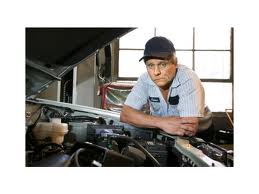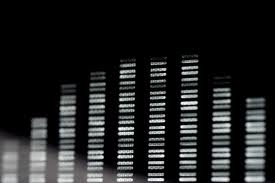Biomechanics and Stroke Mechanics
 Monday, January 16, 2012 at 02:45PM
Monday, January 16, 2012 at 02:45PM  CAtennis
CAtennis  The tennis development process is an interesting animal. Just as there are countless players one can easily find numerous coaches - all with their individual outlook regarding the game. Some coaches are great at fundamentals; others are awesome at the mental aspect; some may be better at strategy and tactics; then there are those who are wonderful at stroke development; a great deal of coaches possess (or like to think of themselves as possessing) a mix of all these attributes.
The tennis development process is an interesting animal. Just as there are countless players one can easily find numerous coaches - all with their individual outlook regarding the game. Some coaches are great at fundamentals; others are awesome at the mental aspect; some may be better at strategy and tactics; then there are those who are wonderful at stroke development; a great deal of coaches possess (or like to think of themselves as possessing) a mix of all these attributes.
It is coaches in the latter group - the ones who specialize in technique - who are the focus of this article. I like to call these coaches "stroke mechanics." Some are wonderful of cleaning up even the biggest biomechanical faults in the players' games. They really have an eye for figuring out how the player can hit the "proper" shot and, a small percentage, can skillfully instruct the player to model their game after a variety of top players (suiting their pupil's body type, interests, mental attitude, etc.). Obviously, these types of coaches should be highly-regarder and well-respected for their keen vision, their fearlessness in taking charge of their students' technical side, and ability to mold the player to hit cosmetically-appealing strokes. However, is there a danger in sticking with these coaches for "too long"? We believe that a danger is very much present. You see, as the player develops and his/her physical characteristics change, the strokes will be affected. If you don't believe me, try touching your nose on your kneecaps or sticking your feet in your mouth. These are things that were routine as a baby but, as your muscles and ligaments grew stronger and, you became a whole lot less limber. So things that were routine as a child are a practical impossibility as an adult.
 The same concept applies when it comes to tennis and strokes. The strokes that you have as a child (or are expected to have) will shift, adjust and modify as you get bigger, faster stronger. Many coaches, however, find themselves (intentionally or inadvertently) on a mythical quest to find the picture perfect strokes for their students; strokes that will remain unchange from age 8 to 18 and later. Although well intentioned, coaches who limit their expertise - and how the game is won and lost - to technique are doing their charges a great disservice. Yes, players should always seek to perfect their strokes. But as we said in the past, tennis is more than just about groundstrokes. The entire game - mental, physical, emotional, tactical - must be developed alongside the strokes. By obsessing over strokes, the players fail to develop these other areas along with their peers. They may end up having the cleanest, most picture-perfect strokes but might not know how and when to use them. Strokes themselves are only the tools of the game; players must understand - just like mechanics - how to use them in order to obtain a desired result. If collecting tools is all you do, you will end up being the tennis-equivalent of a suburban garage mechanic. You'll have the nicest set of tools but you will not know how to use them. The issue being that one could always improve even the best and cleanest shots... even Federer's forehand can be more penetrating, be better placed, or more effective. Therefore, the best developmental coach would be the one who not only shows you the proper technique but also develops it in context thereby allowing you to grow the game. In other words, if the components of the game can be broken down into bars (each indicating a different field: strokes, footwork, strategy, mental, emotional management, physical, motivation, etc.) on a music volume analyzer display (above), the best coach would try to raise all the bars (sometimes at the same time; other times separately) and not leave certain portions of the game unattended. This will ensure that the player grows with and into the game and, as a result, will be in a better position to launch an attack towards the top of the rankings when it matters.
The same concept applies when it comes to tennis and strokes. The strokes that you have as a child (or are expected to have) will shift, adjust and modify as you get bigger, faster stronger. Many coaches, however, find themselves (intentionally or inadvertently) on a mythical quest to find the picture perfect strokes for their students; strokes that will remain unchange from age 8 to 18 and later. Although well intentioned, coaches who limit their expertise - and how the game is won and lost - to technique are doing their charges a great disservice. Yes, players should always seek to perfect their strokes. But as we said in the past, tennis is more than just about groundstrokes. The entire game - mental, physical, emotional, tactical - must be developed alongside the strokes. By obsessing over strokes, the players fail to develop these other areas along with their peers. They may end up having the cleanest, most picture-perfect strokes but might not know how and when to use them. Strokes themselves are only the tools of the game; players must understand - just like mechanics - how to use them in order to obtain a desired result. If collecting tools is all you do, you will end up being the tennis-equivalent of a suburban garage mechanic. You'll have the nicest set of tools but you will not know how to use them. The issue being that one could always improve even the best and cleanest shots... even Federer's forehand can be more penetrating, be better placed, or more effective. Therefore, the best developmental coach would be the one who not only shows you the proper technique but also develops it in context thereby allowing you to grow the game. In other words, if the components of the game can be broken down into bars (each indicating a different field: strokes, footwork, strategy, mental, emotional management, physical, motivation, etc.) on a music volume analyzer display (above), the best coach would try to raise all the bars (sometimes at the same time; other times separately) and not leave certain portions of the game unattended. This will ensure that the player grows with and into the game and, as a result, will be in a better position to launch an attack towards the top of the rankings when it matters.

Reader Comments (3)
Great article. And the same is true for ladies. Too many times coaches forget that, and treat children and women like men in miniature.....Hopefully the study of biomechanics and kinesiology will help coaches to help build a "complete"player.....
Great article, well said, quite pertinant!
I've come to the conclusion that their never will be one perfect coach that you can stick to for the entire tennis developmental process. Similar to a ninja in training, I think you need to work with at least 3 masters (coaches) to ensure that development continues properly and you need to actually spar (compete) in live points - not just strokes off of feeds. Swing path, proper grips and contact points with the quickstart approach to tennis can indeed be "proper" even in 5 year olds IMO. Should be no major difference between swing paths of kids or adults if the quickstart approach is used - thats the whole point of quickstart.